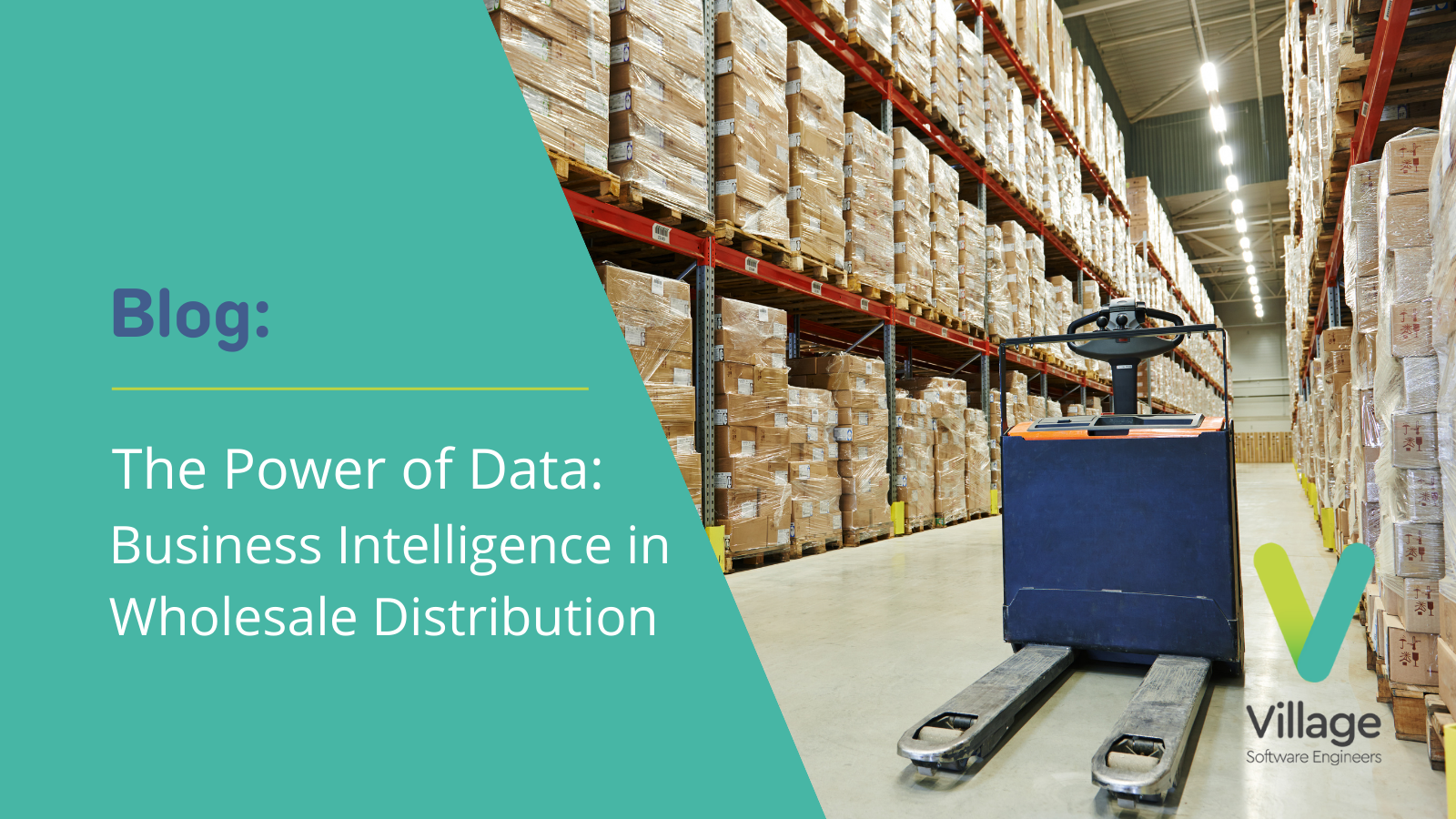The Power of Data: Business Intelligence in Wholesale Distribution
Date: Wednesday, May 17, 2023
Business intelligence (BI) is quickly becoming an essential tool for wholesale distribution businesses of all sizes. With the right BI solutions in place, these organisations can gain unprecedented insight into their operations and make smarter decisions that drive revenue, profitability, and customer satisfaction. In this blog post, we'll explore how wholesale distribution businesses can leverage business intelligence to gain a competitive advantage.
What is business intelligence?
Business intelligence (BI) is a powerful tool that helps businesses collect and analyse data from various sources to gain insight into their operations and make informed decisions. BI can help wholesale distribution businesses track sales performance, identify trends in customer behaviour, optimise inventory levels, and improve overall operational efficiency.
BI utilises advanced software applications, tools, and techniques to transform raw data into valuable insights that can be used to guide business strategies and improve decision-making. Through BI, wholesale distribution businesses can gain a competitive edge by identifying areas for improvement and taking action based on the data.
BI can be used to analyse various types of data, including sales and financial data, customer data, inventory data, and more. By combining data from different sources, wholesale distribution businesses can gain a complete picture of their operations and make data-driven decisions to drive growth and success.
In short, BI provides businesses with the necessary tools to turn their data into actionable insights that can help drive growth, profitability, and success in today’s fast-paced and highly competitive wholesale distribution market.
How can data help my wholesale distribution business?
Data is one of the most powerful tools in today's business world. Wholesale distribution businesses, like many other industries, generate large amounts of data through their daily operations. This data can be used to improve a company's competitive edge and drive profitability. Business Intelligence (BI) is the key to unlocking this potential.
Business Intelligence (BI) refers to the technologies and processes used to analyse and interpret data in order to make informed decisions. BI provides insights into business operations, performance, and customer behaviour. By using BI, wholesale distribution businesses can uncover hidden trends and patterns in their data and leverage that information to make better business decisions.
There are many examples of wholesalers using BI to gain a competitive advantage. For instance, a wholesaler might use BI to identify sales trends by product line or region, or to track inventory levels in real-time to avoid stock-outs. This kind of data-driven decision-making can help a wholesaler better manage their supply chain and respond quickly to changes in demand.
What are some key performance indicators for my industry?
As a wholesale distribution business, you want to make sure you're operating efficiently and effectively to maximise your profits. One way to do that is by monitoring key performance indicators (KPIs) that are relevant to your industry. Here are some KPI examples for wholesale trade:
- Lead Times - This is the time it takes for your suppliers to deliver products to your warehouse. The longer the lead time, the more you need to plan ahead and manage inventory levels.
- Picking Accuracy - This measures how accurately your staff are picking products from your warehouse shelves. Low accuracy can result in wasted time and money as incorrect orders are filled.
- Picking and Packing Costs - This includes all costs associated with picking and packing orders, including labour, equipment, and supplies. Tracking this KPI can help you identify ways to reduce costs and improve efficiency.
- Staff Utilisation - This measures how effectively your employees are working and how well they are utilizing their time. Low labour utilisation can indicate inefficiencies in your processes or staff shortages.
- Equipment Utilisation - This measures how effectively you're using your warehouse equipment, such as forklifts and pallet jacks. Low utilisation can indicate that you have too much equipment or that you need to improve your scheduling.
By monitoring these KPIs and using the data to make informed decisions, you can improve your operations, reduce costs, and provide better service to your customers.
How can I use data to improve my customer relationships?
One way data can help improve customer relationships is by identifying patterns in customer behaviour. By analysing past purchasing habits, wholesalers can predict what their customers might need in the future and proactively offer relevant products and services. They can also use this information to tailor their marketing and communication efforts to better resonate with their customers' preferences and expectations and also to identify cross-selling opportunities.
Data can also be used to optimise pricing and promotions to enhance customer loyalty and drive repeat business. Wholesalers can use pricing analytics to determine the right pricing strategy for each customer and product. They can also analyse promotions to understand which ones are most effective in driving customer engagement and sales. By constantly refining these strategies, wholesalers can create a more personalised shopping experience that will keep their customers coming back for more.
How can I use data to increase operational efficiency?
Data-driven insights can help wholesale distribution businesses identify opportunities for optimizing operations, increasing productivity, and reducing costs. Machine-led insights are essential for achieving maximum ROI throughout the value chain. One emerging field that combines multiple data science techniques to extract insights from event logs is process mining. Process mining allows companies to analyse their operations in real-time and make data-driven decisions that improve efficiency, quality, and overall performance.
However, many organisations fail to align operational decisions gleaned from analytics with their financial implications, which can ultimately affect the bottom line. It's essential to align financial strategies with outcomes instead of stakeholders. That way, businesses can make sure that they're using data to drive operational efficiency in a way that supports their long-term financial goals.
When it comes to leveraging data to improve operational efficiency, advanced analytics should be used wherever there's a profit to be made or loss to avoid. By applying analytics to every aspect of the supply chain, from inventory management to shipping and delivery, companies can optimize their operations and improve their bottom line. For example, analytics can be used to identify bottlenecks in the shipping process, which can help to reduce shipping times and costs. In addition, predictive analytics can help companies forecast demand and ensure that they have the right amount of inventory on hand to meet customer needs.
In summary, data is a valuable resource for wholesale distribution businesses. By using BI to analyse and interpret this data, businesses can gain insights into their operations, performance, and customers, which can be leveraged to drive profitability and maintain a competitive edge. As technology continues to evolve, the ability to harness the power of data will become increasingly important for the wholesale distribution industry.
The team at Village are experts in Business Intelligence across various industries, get in touch to discuss your BI needs for your business today.
 About Us
About Us Services
Services Sectors
Sectors Case Studies
Case Studies Blog
Blog Contact
Contact



